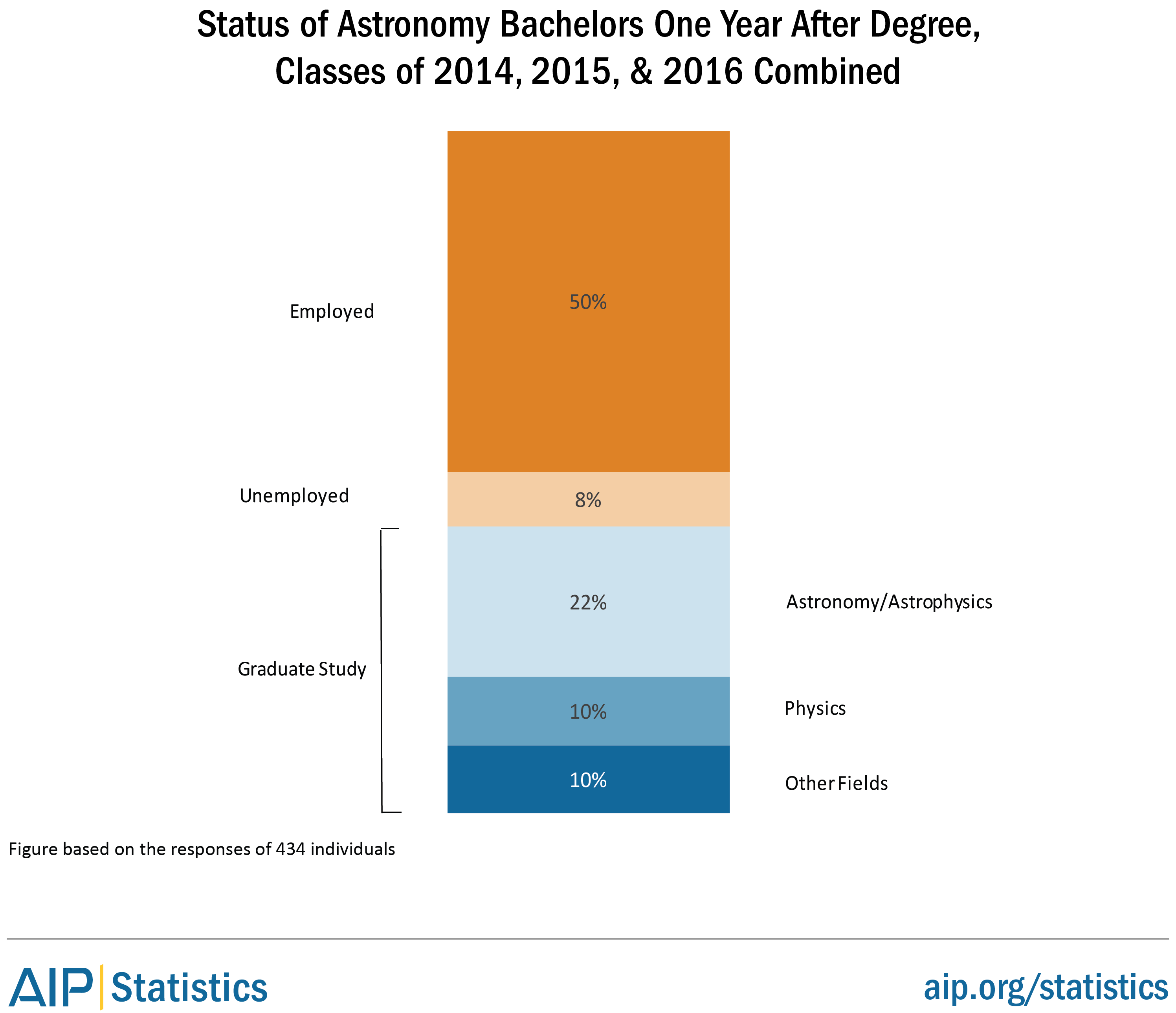Astronomy Degree Recipients: One Year After Degree

Richard Fienberg Running Hare Observatory
This post is adapted from an American Institute of Physics announcement:
A new report by Patrick Mulvey and Jack Pold of the American Institute of Physics (AIP) Statistical Research Center (SRC) details the initial employment outcomes of astronomy bachelor's degree, master's degree, and PhD recipients from the classes of 2014, 2015, and 2016 combined. It includes data on starting salaries, employment sectors, and fields of employment. The report also includes data on the proportion of astronomy bachelor's and master's recipients who continued their education after receiving their degrees. The data come from the annual AIP follow-up survey conducted in the winter following the academic year in which the students received their degrees.

The number of students earning undergraduate astronomy degrees in the US has been steadily increasing. In 2015–16, an all-time high of 469 astronomy bachelor's degrees were awarded; this was up 14% from the previous year. In recent years, women have comprised about a third of the astronomy bachelor's degrees awarded. For comparison, women represented about one-fifth of the physics bachelors during the same time period. Almost half (48%) of the astronomy bachelors indicated they were graduating with a double major. About two-thirds of those with double majors indicated they were also majoring in physics. Mathematics was the next most common other major.
Post-degree outcomes for new astronomy bachelors were fairly evenly split between those entering the workforce and those pursuing graduate studies. A greater proportion of the women (49%) pursued graduate studies than the men (36%). Differences in initial status also occurred depending on whether an individual graduated with a double major. Astronomy bachelors who graduated with a double major were more likely to be enrolled in graduate programs than those who did not.

